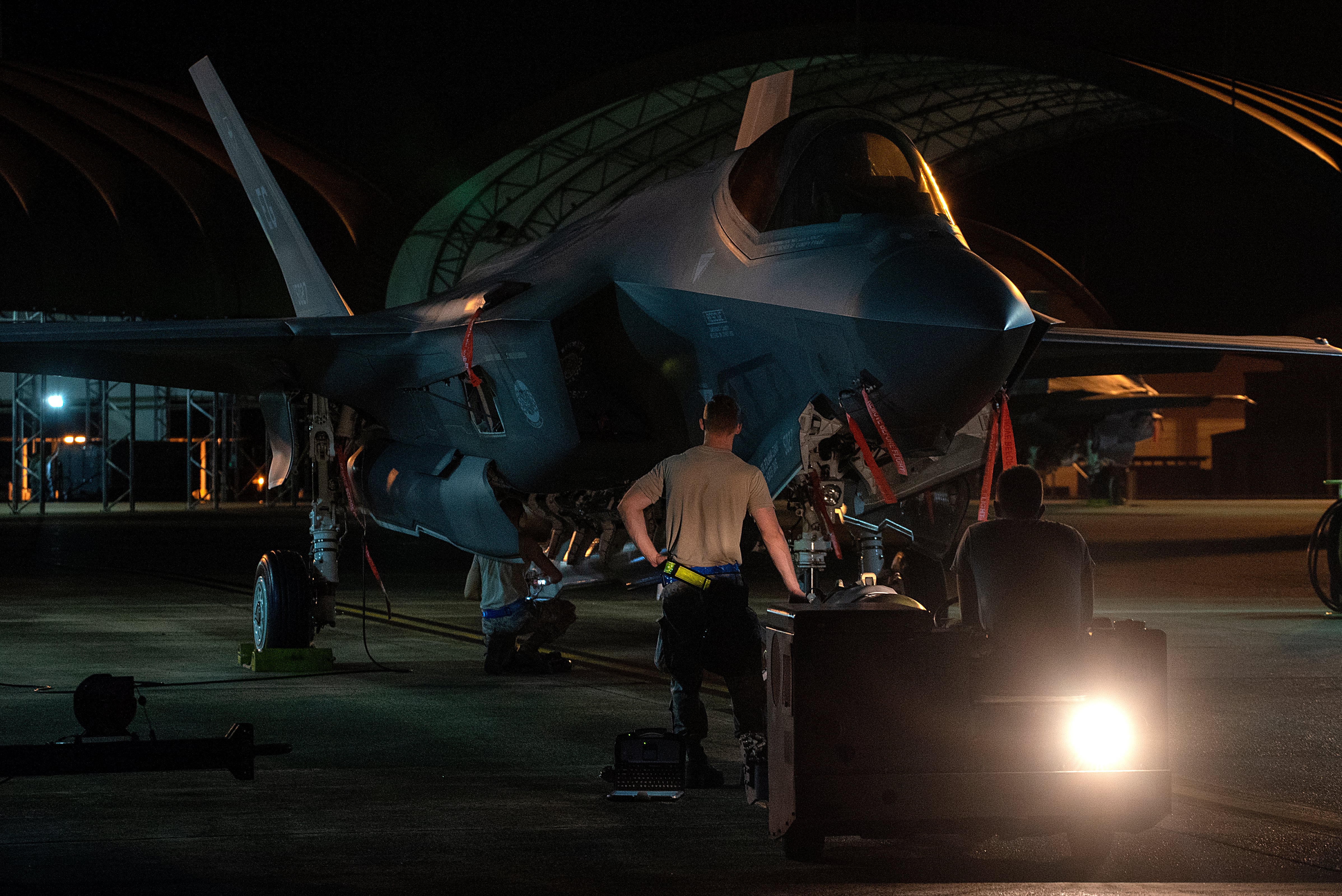ORLANDO, Fla. — Next year, U.S. Air Force F-35 pilots will be able to hop into a simulator and practice large-scale coordinated attacks with other F-35A users in simulators around the globe, Lockheed Martin’s head of F-35 training said Tuesday.
The capability, called Distributed Mission Training, will allow an unlimited number of F-35 simulators to be networked, enabling high-end training, said Chauncey McIntosh, Lockheed’s vice president for F-35 training and logistics.
“We’ve been testing to ensure that it’s ready to go with our first customer at Nellis Air Force Base [in Nevada]. We’ve got hardware that’s going up there this month and we’re starting our test connections, and everything is looking very well [regarding] this product,” he said during a briefing at the Interservice/Industry, Training, Simulation and Education Conference.
Click here for more from I/ITSEC.
“Essentially we’re waiting just to get the accreditation from the government. We’ll connect that [hardware] and then we’ll start running tests on site with software. And then we’ll go to our final delivery in spring of 2020," he told Defense News.
Currently, F-35 bases can only link as many simulators as they have on site — usually as many as four. However, the Distributed Mission Training capability, or DMT, will allow every U.S. Air Force base to connect up to four of its F-35 simulators with those of every other air base, McIntosh said.
At some point, F-35A simulators may also be able to regularly connect with any other aircraft simulator that can be supported on the same network.
“Here at Orlando, in our labs, we’ve already connected to the F-22, the F-16, as well as to [E-3] AWACS [airborne early warning and control aircraft],” McIntosh said. “Almost every week we are writing test scenarios with additional platforms.”
RELATED

Lockheed is under contract to provide DMT to the U.S. Air Force, Navy and Marine Corps, as well as to the United Kingdom. However, because all of those entities run their F-35 simulators aboard different networks, they will be unable to connect with variants from other services, McIntosh said.
While Nellis is slated to receive DMT early next year, the F-35 Joint Program Office and Lockheed are still discussing the schedule for further deployments to other bases and services, McIntosh explained.
“Our initial efforts are for the Air Force,” he said.
Valerie Insinna is Defense News' air warfare reporter. She previously worked the Navy/congressional beats for Defense Daily, which followed almost three years as a staff writer for National Defense Magazine. Prior to that, she worked as an editorial assistant for the Tokyo Shimbun’s Washington bureau.








